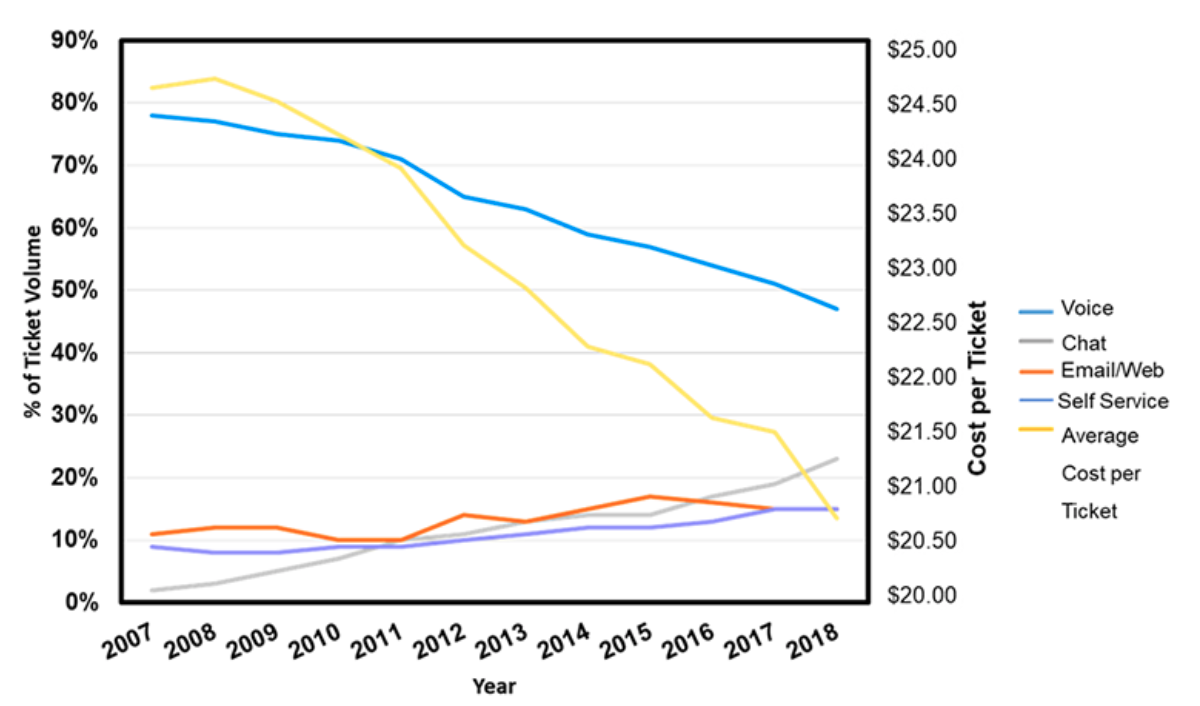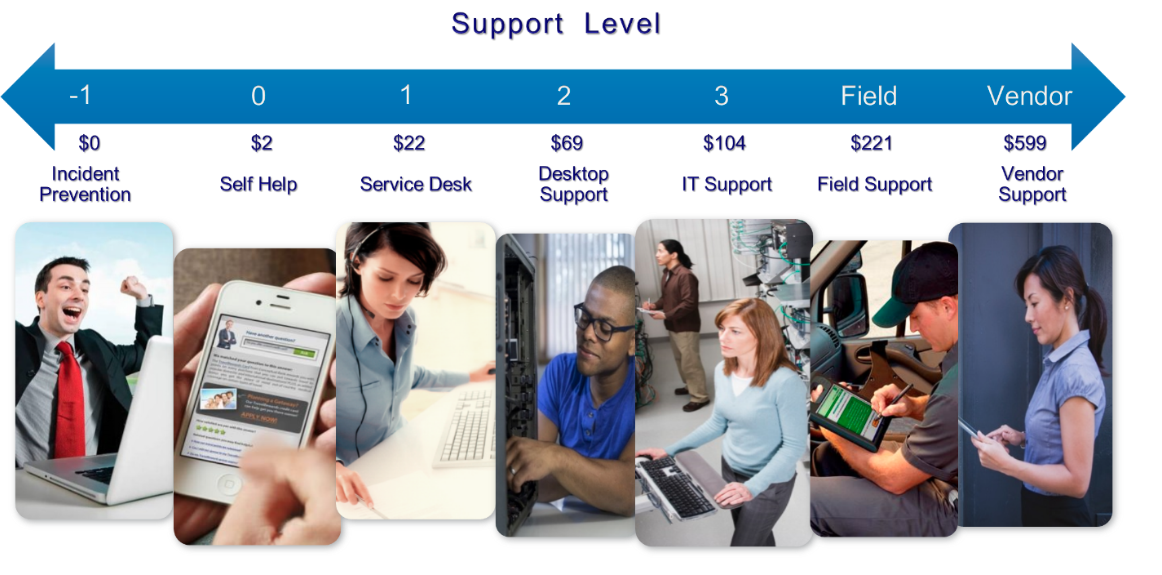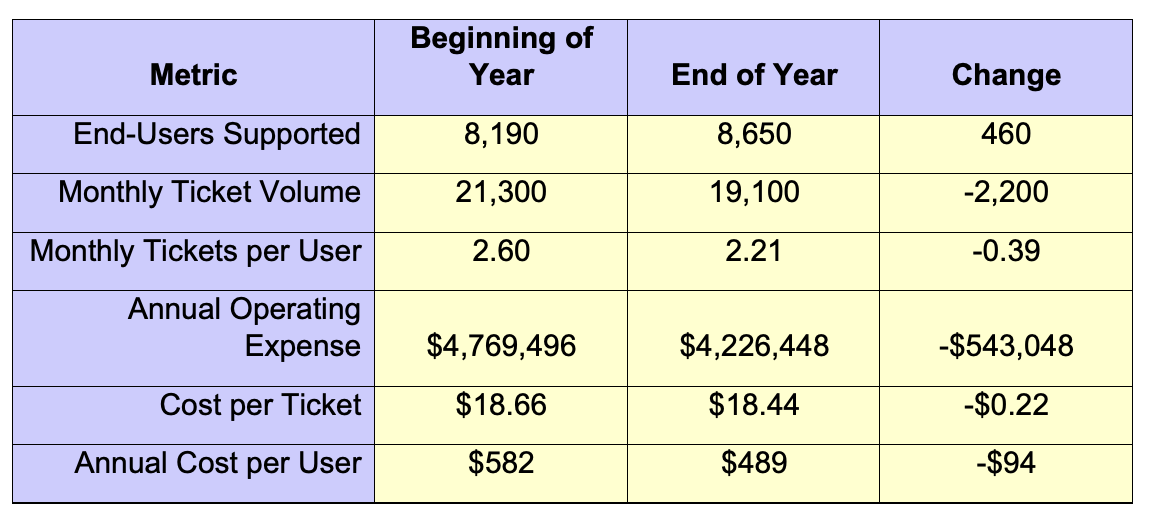Most IT departments can tell you how much they spend on service and support, but very few can quantify its economic impact. Support groups that understand and quantify their organization's return on investment (ROI) gain several important advantages; chief among them is the ability to obtain funding and other resources based on the economic benefits of the support they deliver.
Here is a straightforward, yet powerful, methodology for using ROI to transform your service management cost center into an internal profit center, and gain a competitive advantage in IT service and support.
Support is a business within a business
As a veteran of more than 4,000 IT service and support benchmarks, I have witnessed firsthand that the most successful support organizations think and act like profit-generating businesses. Above all, they understand how value is created in service and support, and they are not shy about leveraging that potential to generate economic value for the enterprise.
Assume for a moment that you're spending $2.5 million annually on Level 1 support. Let’s further assume that you can prove that you are generating $7.5 million of economic value from that operating budget. Your ROI in this scenario would be 300% .
Think this is far-fetched? Think again.
The data shows that top-performing IT support organizations produce ROI of 500% or greater on an annual basis.
Moreover, the ability to demonstrate highly positive ROI means that you are operating a business within a business, which produces several tangible and intangible benefits.
Calculate your ROI advantage
ROI is one of the most common and important measures of financial performance in the business world, yet more than 90% of all technical support organizations fail to measure this critical metric. The result is that many IT service and support organizations find themselves on the defensive when it comes to budgeting and spending, and they often struggle just to get the funding needed to deliver adequate levels of support.
Calculating the ROI of IT service and support is not as difficult as you might think. Using data from more than 4,000 IT service and support benchmarks, MetricNet has identified three measurable drivers of economic value: Channel Mix, Shift-Left, and Productivity Impact. Let’s examine each economic driver in more detail, starting with Channel Mix.
Deflect support contacts into lower-cost channels
With the exception of walk-up support, voice calls are the most expensive support channel. For this reason, support organizations worldwide engage in a variety of tactics to drive contacts into lower-cost channels, including chat, email, and self-help.
Figure 1: The rate at which the Channel Mix is evolving and the impact this evolution is having on the cost per ticket. Voice has decreased from almost 80% of total ticket volume in 2007 to less than 50% in 2018. This in turn has led to a substantial decrease in the average cost per ticket. Source credit: MetricNet
There is both an economic and a demographic driver behind this phenomenon. The key economic driver is that the voice channel is very spiky due to what's called the Erlang C distribution, which defines the rate at which voice calls enter the queue. This leads to inherent inefficiencies in staffing the voice channel.
MetricNet’s benchmarking data shows that the average ticket resolved in chat costs just 76% as much as the same ticket resolved in the voice channel. Likewise, a ticket handled in web/email costs about 81% as much as the same ticket resolved in the voice channel. The cost advantage of the non-voice channels is due to concurrency in the chat channel (a good chat agent can handle more than one chat at a time), and email/web-submitted tickets can be handled more efficiently because the Erlang distribution in these channels is less spiky.
The key demographic driver stems from those who are just entering the workforce. These users tend to be younger and prefer self-help or non-voice channels (i.e., chat and web). Most of these users grew up with text messaging apps as their primary channel for communicating with friends and family. This trend will continue as newer workers continue to enter the workforce, but it’s not the only seismic shift occurring in service and support.
[ Jeff Rumburg will be presenting on this subject in detail at the upcoming Service Management World conference. ]
Reap the economic benefits of shifting tickets left
Shift-Left is the second measurable source of economic value. Organizations that haven't spent a great deal of time shifting left—that is, moving tickets from desktop support to Level 1 service desk, or from Level 1 service desk to Level 0 self-help—are missing out on a significant cost-reduction strategy. Recent MetricNet benchmarks show that 18% of all tickets resolved by desktop support could have been, and should have been, resolved by the Level 1 service desk. These unnecessary escalations result in hidden support costs that often go unnoticed because they are rarely tracked.
Figure 2: Benchmarking data for the fully loaded cost per ticket at several support levels.
 These costs are additive. For example, a typical service desk ticket last year in North America cost around $22. If the same service desk ticket was unnecessarily escalated to desktop support, it would cost an additional $69, making the total cost of that ticket $91 ($22 expected cost + $69 hidden cost). For a desktop support group handling 10,000 tickets per month, that could result in nearly $1.5 million in annual hidden costs (10,000 tickets per month x 18% that could have been resolved at Level 1 x $69 "hidden" desktop support cost per ticket x 12 months). As you can see, the well-known industry expression “Get it done at Level 1” is not just a pithy catchphrase. It can literally save your organization millions of dollars a year.
These costs are additive. For example, a typical service desk ticket last year in North America cost around $22. If the same service desk ticket was unnecessarily escalated to desktop support, it would cost an additional $69, making the total cost of that ticket $91 ($22 expected cost + $69 hidden cost). For a desktop support group handling 10,000 tickets per month, that could result in nearly $1.5 million in annual hidden costs (10,000 tickets per month x 18% that could have been resolved at Level 1 x $69 "hidden" desktop support cost per ticket x 12 months). As you can see, the well-known industry expression “Get it done at Level 1” is not just a pithy catchphrase. It can literally save your organization millions of dollars a year.
Monetize user productivity
The single biggest driver of ROI is the productive hours that can be returned to end users.
Figure 3. The estimated annual productive hours lost by end users due to various IT-related incidents, service requests, outages, and other issues. The x-axis represents the quartile performance of service and support, while the y-axis represents an estimate of the annual productive hours lost per FTE. Source credit: MetricNet
Those who are lucky enough to work in an organization with top-quartile IT service and support will lose about 17 productive hours per year, while those who are unlucky enough to work in an organization with bottom-quartile IT service and support will lose an estimated 47 productive hours annually—nearly six full days!
If your support organization operates as a top-quartile performer, you are returning an estimated 30 productive hours per end user per year compared to a bottom-quartile performer. For a large organization with tens of thousands or even hundreds of thousands of end users, the financial impact of returned productivity can be enormous.
Adding up the ROI: A real-world example
Consider the case of this mid-size service desk at an insurance company that had an operating expense of $4.8 million per year. The help desk supported 8,190 users, and handled 21,300 tickets per month. Through aggressive problem management over the course of a year, the service desk reduced ticket volume from 2.6 tickets per user per month to 2.2 tickets per user per month. The table below summarizes the results of the service desk's problem management initiative.
Figure 4: In the example above, the estimated total savings attributable to problem management would be $813,100 ($94 annual savings per user x 8,650 users supported). Source credit: MetricNet.
Technology can also reduce incoming contacts, and hence the cost of support. Password management tools are a perfect example of this. In North America last year, password resets accounted for more than 25% of all service desk contacts. By adopting a password management tool, a typical service desk can eliminate more than half of the resets that would otherwise be completed by a live agent. This amounts to real savings for any support organization.
Not only can service and support make end users more productive, but you can quantify the economic benefits of these productivity gains. Here's how to apply these productivity gains to the insurance company example above.
We know from benchmarking the company that it has a top-quartile service and support organization. We also know that the difference in lost productivity between a top-quartile and an average performer is about 16 hours per user per year (33 hours of lost productivity for an average company versus 17 hours of lost productivity for a top-quartile performer). By multiplying by 8,650 end users, we estimate a total labor savings of 138,400 hours per year (16 hours per year saved x 8,650 users).
The average work year has about 1,700 productive hours in it, so this labor savings is the equivalent of 81 FTEs (138,400 hours per year saved ÷ 1,700 work hours per FTE per year). Finally, we know that the average cost per employee in the insurance company is $109,300, including salary and benefits. The economic value of this support group being a top-quartile performer is therefore about $8.9 million annually (81 FTEs x $109,300).
The third source of quantifiable value is the result of reducing support costs through shifting left. Recent benchmarks show that the average Level 1 resolution rate for North American service desks is about 82%. This means that 18% of all tickets that should have been resolved at Level 1 are transferred or escalated to another source of support for resolution. These unnecessary escalations represent defects in the support process, and result in increased costs that often go unnoticed because they are rarely tracked.
Note that Level 1 resolution is not the same as first-contact resolution. You calculate the former by dividing the number of tickets resolved by the service desk by all tickets that can potentially be resolved by the service desk, regardless of whether the ticket was resolved on first contact or not.
As shown in Figure 2 above, the cost of resolution increases with each successive ticket transfer to a higher level of support. The insurance company in our case study had an impressive 93% first-level resolution (FLR) rate—11 percentage points higher than the industry average. That equates to resolving an additional 25,212 tickets per year at Level 1 versus the industry average (11% FLR premium x 19,100 tickets/month x 12 months). If you now multiply this by the difference in cost ($40) between tickets resolved at Level 1 versus tickets resolved at Level 2, you'll find a cost savings of $1,008,480 per year (25,212 tickets per year x $40).
Once again, technology can play a role in reducing your organization’s service and support costs. Knowledge management and remote diagnostic tools are among the most common technologies organizations use to improve FLR rates, and hence reduce total cost of ownership (TCO).
Now consider how Channel Mix, and specifically deflecting contacts into lower-cost channels, can contribute to the ROI of service and support. In the first year that the insurance company implemented its self-help portal, it resolved an estimated 33,000 incidents through self-help. From the diagram above you can see that the average cost of a self-help incident is about $2, while the average cost of an agent-assisted incident at Level 1 is about $22. You can therefore reasonably assume that the 33,000 tickets that were self-resolved produced a savings of $660,000 (33,000 self-resolved incidents x $20 savings per self-resolved incident).
To conclude the case study, let’s sum up the economic value delivered by the service desk at the insurance company. We have rounded the following estimated cost savings:
- $800,000 saved through problem management
- + $8.9 million in returned productivity to end users
- + $1 million saved by maximizing first level resolution
- + $700,000 saved through the self-help portal
======================================================
Total economic value = $11.4 million annually
With an estimated cost savings of $11.4 million, and an annual operating expense of $4.2 million, this support organization is producing economic value far in excess of its costs. Specifically, the ROI for this service desk is 271% ($11.4 million in savings ÷ $4.2 million in annual operating expense equals $2.71 returned for every dollar invested).
The ROI challenge
Much has changed since I first heard the term “help desk” almost 30 years ago. But one thing that hasn’t changed is that most IT service and support organizations are still viewed and managed as cost centers. Simply put, a cost center is responsible for managing its costs, but not for generating revenue, profits, or making investment decisions.
Being a cost center carries with it several negative connotations. It suggests that IT service and support organizations create little, if any, intrinsic value, and cannot be trusted to use their resources wisely. It is therefore no surprise that many service and support organizations feel that they lack adequate resources, as well as the management commitment and backing, to deliver consistently high-quality results. Moreover, support organizations that do lack adequate resources tend to operate tactically, often lurching chaotically from one crisis to the next.
Fortunately, there is an alternative, a proven approach that can transform your tactical support center into a strategically focused, internal profit center that creates demonstrable economic value for the enterprise. To embark upon this transformation, you must understand and clearly articulate the ROI of service and support. While this may take you out of your comfort zone, the alternative—a tactical, subsistence-level support organization—should be motivation enough to overcome any hesitancy you may have about calculating and boldly communicating your ROI. This is crucial if you wish to transform IT service and support from a tactical cost center into a strategic source of value creation for the enterprise.
Get your organization to 100% ROI
IT service and support organizations have the potential to produce annual ROI well above 100%. You can do this through a combination of shifting left, deflecting contacts into lower cost channels, eliminating incidents through problem management, and, most important of all, returning productive hours to end users.
Now that you understand how economic value (the "return" in ROI) is created, your next step is to apply this knowledge to calculate the ROI of your own support organization so you can reap the rewards of operating as a profit center within the enterprise.
Join Jeff at Service Management World in Orlando, Florida, on November 12, 2019, where he'll be leading the industry’s first ROI workshop. He will share a downloadable ROI calculator, and work with audience members to help them calculate their service and support ROI. The conference runs November 11-13.
Keep learning
Choose the right ESM tool for your needs. Get up to speed with the our Buyer's Guide to Enterprise Service Management Tools
What will the next generation of enterprise service management tools look like? TechBeacon's Guide to Optimizing Enterprise Service Management offers the insights.
Discover more about IT Operations Monitoring with TechBeacon's Guide.
What's the best way to get your robotic process automation project off the ground? Find out how to choose the right tools—and the right project.
Ready to advance up the IT career ladder? TechBeacon's Careers Topic Center provides expert advice you need to prepare for your next move.






